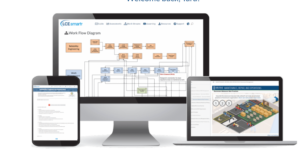A steel production facility dating back to the early 20th century had not undergone major modernization since the late 1980s. Reliability and quality across the operation was suffering. A hot mill upgrade project was designed to change out major equipment, control systems, and services while maintaining scheduled production. Five outages, over 26 months, were planned to execute the activities that require a total hot mill shutdown.
The results of the first planned outage for the hot mill upgrade did not meet expectations. The plant did not start up smoothly or on time and facility managers were not satisfied with how work was planned and the coordination of all parties involved.
To Improve Planned Outage Results, Plant Leaders Engage an Operational Risk Advisor
Because Life Cycle Engineering (LCE) was already engaged in providing reliability support to the plant, senior management asked LCE if they could help with the hot mill upgrade project. LCE explained its Operational Readiness capabilities and discussed how an Operational Risk Assessment would enable the project team to identify, mitigate, and monitor project risk. The assessment process also would drive coordination between team members (engineering, operations, maintenance, and construction), enhance pre-planning of activity (execution, traffic, staging, warehouse, area density), and establish ownership for each identified critical risk.
LCE was brought on board three months prior to the second planned outage. Working with the facility team, which included contractors and major vendors, LCE identified more than 300 project risks, 120 of which were rated as critical with a potential $600MM impact to operations cost. Mitigation plans were developed and an owner was assigned for each critical risk. The team now has a project risk register containing the following data for each risk:
- Plant area
- Risk owner
- Description
- Mitigation plan
- Risk probability
- Risk impact
- Early / Late schedule
Project area managers are using the risk register as an integral tool to drive their weekly area progress meetings, which are now called area risk meetings. Monthly, the project director holds a total project risk review to monitor status on mitigation of each critical risk. LCE’s risk expert now visits the site for one week a month to attend the monthly risk review and to update and reissue the risk register.
Risk Mitigation Efforts Yield Significant Improvements in Second Planned Outage
The following improvements were documented after the second planned outage was completed:
- Improved coordination / support between involved parties (engineering, construction, operations, and maintenance)
- Better flow in traffic, staging, warehouse and controlling area density
- Better planning / scoping of required work activities
- Better utilization of resources (workforce and equipment) and execution of scope
- Start-up of plant smoother and ahead of schedule
- Lessons learned documented to improve the work process for the third outage
Managing the Upgrade Process Requires Period Updating of the Risk Register
The lessons learned from the second outage will allow improvements to the execution plan now being developed for the third outage scheduled for later this year. In an upgrade project with multiple outages, some risk activities in an area may not be completed during a single outage so a single risk may be spread across multiple outages. Many of the risks on the hot mill project fall into this category. After each outage the project team needs to scrub the risk register of truly completed risk, and also update ongoing risk. Each ongoing risk needs to be reviewed for description and risk level. As a risk activity is progressed through multiple outages, its risk profile will lessen and it may be reduced to a non-critical category. This helps the project team focus on the current, critical activity of the project. The work process for the project team is to “rinse and repeat” the risk register at the completion of each outage until the final startup and turnover.

To learn more about LCE’s Operational Risk Assessment services,
please visit our website.
















